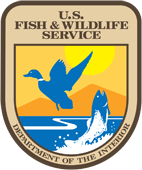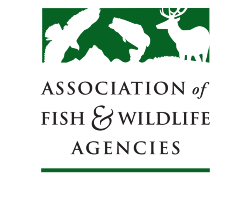Developing Data-Based Strategies to Increase Bowhunting
Strategic Priority
Recruitment, Retention, Reactivation (R3) - Monitoring and Evaluation
Project Documents
No project documents available.
Project Description
Ongoing participation surveys and figures from within the industry indicate that bowhunting is broadly declining. ATA and Responsive Management are working on a small-scale retention and reactivation exploratory study to test email message themes and accompanying images that encourage new and lapsed bowhunters to renew their hunting licenses. This current precursor project will soon yield timely and actionable strategies for retaining new bowhunters and reactivating distinct categories of lapsed bowhunters—as a result, there exists an important opportunity to expand this effort through a new selection of test states using a more refined, strategic, and targeted marketing approach.
Project Facts
- Organization Name: Archery Trade Association
- Organization Status: NGO classified as 501(c)(6)
- State: Maryland
- Obligation: $174,624
- Start Date: 01-01-2018
- End Date: 05-31-2019
Results
Goal/Objective 1: Identify and Establish Partnerships With Test States to Participate in the Study
In May-June 2018, the Responsive Management team and ATA collaborated to contact and invite state fish and wildlife agencies to participate in the current study The research team composed. They distributed a detailed project description as an invitation to participate, answered any questions, and requested detailed state information about the current bowhunting season structure, dates, and license requirements. Responsive Management reviewed the bowhunting season information. Participation was confirmed for the project's final 12 Sitates: Alabama, Georgia, Jowa, Kentucky, Maryland, Nebraska, New Jersey, New Mexico, Oklahoma, Pennsylvania, South Dakota, and Virginia.
Goal/Objective 2: Obtain and Analyze License Data for Each State for the Study
From July to September 2018, RM worked with each of the 12 participating states individually to request and obtain the stale agency's hunting license data for the previous five years per the study's design. For each of the 12 states, this entailed Responsive Management conducting conference calls to discuss the project and subsequent data needs, coordinating the identification of the correct license types, and creating and executing data confidentiality agreements (when requested)—working with database managers and coordinating the electronic transfer of the data ( which differed by states based on state requirements and restrictions).
After the coordination and acquirement process for the data, Responsive Management reviewed each state·s license data, merged the multiple years of data, identified license holders by avidity /license purchasing behavior, deduplicated the license holders across years and randomly selected license holders for each of the nine test groups and the control group. Responsive Management worked on this step as the license data was received from each state and provided the states with the information for each sample test group with instructions on implementation or the email marketing campaign. The sample test group information was provided to the states from August to September 2018.
Goal/Objective 3: Develop and Design Refined Email Messages/ Implement Email Marketing Campaign
The development and design of the refined email messages were completed in 2018.
Responsive Management worked closely with the states to design an implementation plan and schedule for each email marketing campaign. This entailed creating a schedule that worked explicitly with each state's bow or archery season and regulations, ensuring the first send date was a few days before the start of the bow or archery season and a second send date (for the same email) about mid-way through the bow or archery season. (Note that New Mexico required special design and coordination to conduct two separate email campaigns, one targeting the state's fall turkey bow season and another targeting the state's winter javelina bow season).
The actual implementation of the email marketing campaigns occurred in 2018. During this time, states sent out test emails to the sample groups according to the study design developed by Responsive Management. The research team at Responsive Management maintained communication with each state and supported each state throughout the implementation period. Note that New Mexico completed its fall turkey bowhunting email campaign by December 31 but scheduled and sent another full email marketing campaign for javelina bowhunting email campaign for January 2019.
Goal/Objective 4: Conduct Four Focus Groups With New Bowhunters
Responsive Management strategically selected four states to conduct focus groups based on the results of the previously completed study and geography.
A total of four focus groups were conducted with licensed bowhunters. The focus groups were conducted in Tampa, Florida, on January 30; Oklahoma City, Oklahoma, on January 31; West Des Moines, Iowa, on February 12; and Millville, New Jersey, on March 19. The locations were selected to achieve geographically diverse locations among the participating states across Phase I and II studies.
Focus group facilities were secured, and a "screener" was developed to confirm the eligibility of potential focus group respondents when recruiting for participation (i.e., respondents must be licensed hunters in the state who are relatively new to bowhunting). Responsive Management's professional moderators conducted the groups using the focus group discussion guide and booklets containing the respective states' taglines and images used in the email marketing campaigns to facilitate discussion relevant to recruiting, retaining, and reactivating bowhunters.
Goal/Objective 5: Develop State Customer Engagement Toolbox Based on Study Results
The survey was computer coded in an online survey platform, and Responsive Management sent email invitations to complete the survey to the test email sample groups and the control group.
Responsive Management managed and corresponded to all respondent inquiries regarding the survey and the need for technical assistance. The survey was sent out in March 2019. The survey data were reviewed and analyzed following the completion of data collection.
Following the conclusion of the email marketing campaign and the conclusion of the bow/archery season in each state, the license sales lift analysis was conducted. Each participating state's 2018-2019 license database was matched to the initial databases used for the email marketing campaign, allowing each license holder to be categorized as a license purchaser or a non-purchaser following the email marketing campaign. The sales lift was calculated for each of the nine email messages used in the marketing campaign by comparing license sales for each message's treatment group (i.e., the sample group that received a particular email) to sales among the control group. Lift is the percent difference between the sales in the treatment group and the sales in the control group. Following the conclusion of all data collection and analysis, a thorough report of the results was produced by Responsive Management, highlighting key results.
Following the conclusion of all data collection
and analysis, a report of the results designed for ease of reference and use was completed, and recommendations for best practices were presented, outlining campaign strategies to use and avoid.
Goal/Objective 6: Develop BMP Recommendations for Communicating with License Purchasers
responsive Management has included these toolbox recommendations in the final, comprehensive report.


